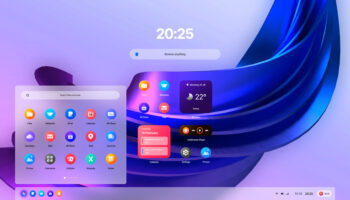Automate login and bypass the lock and Start screens in Windows 8.1
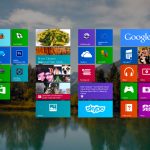
Windows 8.1 is a huge improvement over Windows 8. Once you've spent any time in the preview (or one of the leaked builds) you'll find it impossible to go back to the obviously half-baked original.
But the default setup still has some annoyances that get in the way and prevent you from just booting up your PC and using Windows. For starters there's the lock screen to get through -- a delaying stage which serves little purpose in a home environment. Then you have to enter your password and log to in your Microsoft account, and finally, once you've cleared those steps, there's the Modern UI to go through on your way to the desktop. Fortunately you can configure Windows 8.1 to skip all of that nonsense.
How Big Data is destroying the US healthcare system

One thing I find ironic in the current controversy over problems with the healthcare.gov insurance sign-up web site is that the people complaining don’t really mean what they are saying. Not only do they have have little to no context for their arguments, they don’t even want the improvements they are demanding. This is not to say nothing is wrong with the site, but few big web projects have perfectly smooth launches. From all the bitching and moaning in the press you’d think this experience is a rarity. But as those who regularly read this column know, more than half of big IT projects don’t work at all. So I’m not surprised that there’s another month of work to be done to meet a deadline 5.5 months in the future.
Yes, the Obama Administration was overly optimistic and didn’t provide enough oversight. Yes, they demanded fundamental changes long after the system design should have been frozen. But a year from now these issues will have been forgotten.
[Update -- fixed!] Social sharing service Buffer is hacked -- temporarily takes itself offline
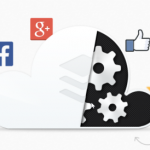
The latest web service to fall victim to a hack attack is Buffer, the social sharing tool that can be used to schedule posts to multiple social networks. Although it looks as though customers' passwords and billing details are safe, the problem was noticed late Saturday morning when spam type posts started to appear on users' Facebook and Twitter accounts. The Buffer team has been quick to take action and notified users via Facebook.
Buffer co-founder Leo Widrich posted saying "hey everyone! We greatly apologize for this big mess we've created. Buffer has been hacked." Shortly after this Facebook postings were disabled in a bid to stop the spread of spam and Buffer assured users that "We're continuing to work on this and trying to investigate and fix".
RSS reader Feedly pushes preposterous pricing for Pro package -- $299!

It is now four months since Google Reader shut up shop. At the time, Google cited a declining interest in the product and many people were quick to suggest that RSS was a technology past its sell-by date used by very few. But this seems to be contradicted by the staggering number of Google Reader alternatives that popped up to cater for the large numbers of RSS fans who bemoaned the loss of Google's tool.
One tool that quickly gained a large following is Feedly. In fact, so many people switched to Feedly that servers were unable to cope, and the service briefly collapsed under the weight of its own popularity. This was a temporary blip and things were soon back up and running. I was one of thousands of people who made the jump -- in fact I had a period of crossover using Feedly and Google Reader simultaneously to help ease the transition -- and things went fairly well.
The most popular stories on BetaNews this past week -- October 20-26

Apple took center stage this week. At a special event the new iPad Air, iPad mini, Mac Pro and a raft of free software were all revealed, and we liveblogged through the whole thing. Not to be outdone by Microsoft, Apple decided to give Mavericks away free of charge along with iWork and iLife. But it was the iPad Air and mini that stole the show, sharing the same innards as the recently announced iPhone 5s, but boasting a redesigned exterior -- at least in the case of the Air.
Of course, no tablet launch would be complete without matching cases. There was also the interestingly designed Mac Pro which looks delightful and is a serious powerhouse, but has a price tag to match. After the big launch of the iPhone 5s, Apple showed off the latest addition to the iPhone range in a TV commercial.
Why the Obamacare website Healthcare.gov had zero chance of success

If you wanted to build a case study in the perfect recipe for IT project disaster, you wouldn't have to look any further than the new official Obamacare website, Healthcare.gov. The site, which was supposed to be the official gateway for Americans to purchase cheap (now clearly up for debate) health insurance, has become an overnight poster child for just how bad the government can fumble a well-to-do technology implementation. The common symptoms are all present: budget overruns, too little time to test, poor design & planning, and you can take it from there.
So when the President came out for an impromptu press conference about the disaster this past Monday, it struck me a little odd at how he addressed the situation. He went on to describe the numerous problems plaguing the website, and then turned course to let us know that the feds were calling in the "best and brightest" in the tech industry to help solve the woes. Verizon was publicly mentioned -- which I'm not sure why that namedrop really mattered, since I didn't know Verizon's mobility expertise really had much of anything to do with a large federal website catastrophe.
The new Industrial Revolution -- the business impact of smart machines and automation

Analysts and journalists periodically voice concerns over smart machines stealing middle-class jobs. According to Kenneth Brant, research director at Gartner, "Most business and thought leaders underestimate the potential of smart machines to take over millions of middle-class jobs in the coming decades".
This is quite an assumption to make. Machines have been tools for efficiency for centuries now. They’re not as terrifying as some might think. The results have actually been quite the contrary. Rather than leaving workers on the streets, using "smart machines" to automate repetitive, manual tasks has allowed people to progress to more skilled labor, work fewer hours, and experience greater job satisfaction overall. It makes employees more strategic and empowered. And the story continues. Now, as computers grow ever faster and more powerful, we’re on the edge of another Industrial Revolution -- not on the factory floor -- but in the back office of business.
FotoSketcher adds enhanced painting effect, new frame

Free photo transformation tool FotoSketcher has been updated to version 2.6 with a couple of welcome new features.
The first is a gorgeous new "Painting 1" (watercolor) effect, which replaces the previous offering. Open a photo, choose "Painting 1 (watercolor)" as the "Drawing Style", and click "Draw" to transform your photo into a painting.
Card fraud in the US: How EMV technology will change everything

In recent months, the US has been at the root of the global EMV discussion (the name EMV comes from Europay, MasterCard and Visa). With adoption of the new standard slow-going, the US is one of the last major economies to make the transition. As a result, it has found itself on the receiving end of fraud migrating from mature EMV markets, exposing itself as a point of weakness for fraudsters.
In 2012, 20 US states reported an increase in ATM fraud via skimmed cards according to analytics vendor Fico. Meanwhile, EMV in the UK has seen overall card fraud decrease from $275 million in 2009 to just $68 million in 2012, according to Financial Fraud Action UK. Despite this, the UK is still plagued by skimmers, with attempts to steal card holder data from ATMs almost tripling, from 2,553 to 7,525 incidents over the past year. Fraudsters can use data from the mag-stripe, which remains on Chip-enabled cards, to then clone cards and use them where mag-stripe payments are still accepted. Therefore, as long as regions such the US continue to accept mag-stripe cards to withdraw cash, there will remain a global issue of fraud migration.
WordPress 3.7 brings automatic updates, smarter search results

The WordPress team has announced the release of WordPress 3.7 (code-named "Basie", for Count Basie), a notable upgrade with some worthwhile maintenance, security and usability tweaks.
Top of the list is automatic updates for maintenance and security updates. This should work just fine for most people, but if you’re out of luck then you’ll be informed after updating to 3.7, and instead you’ll get email alerts of new security releases.
Surface Pro Docking Station makes an early surprise appearance [Update]
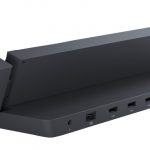
When I attended the Surface event in September, I was very impressed with the hardware -- the tablets and accessories. While I was most enamored with the Blade concept, I was also interested in the Surface Pro Docking Station. I had some hands-on experience with the accessory and found it to be well-built and fun to use. It felt very futuristic and simplistic -- you press the sides of the dock into the tablet. It felt like playing with Lego blocks.
While the Surface Pro 2 was released on October 22, the docking station was scheduled for next year, in 2014. This was a huge blow to business users especially, as it enables the device to act as both a tablet and a desktop (perfect for an on-the-go executive). However, out of the blue, the docking station becomes available today. Pull out that credit card.
Best Windows 8 apps this week (Anniversary edition)

Fifty-second in a series. Welcome to the one-year anniversary edition of Best Windows 8 apps of the week.
The overall application growth in the US Windows Store has picked up this week crossing the 1,000 apps mark for the first time in months. A total of 1,454 new apps were released to the store this week, and the overall count of apps in the US Store reached 87,625 as a consequence of this.
Sorry Microsoft, Surface sales are still not good enough

Surface is the tablet market's laughing stock. Microsoft has introduced the two-slate lineup in an attempt to steer consumers away from Apple's iPads and the myriad of Android tablets, by luring them with Windows and its services. In theory, the idea sounded great when the lineup was unveiled in June, last year, showing plenty of promise from the get-go but, as it turns out, most people only want Windows on their desktops and laptops, and not on tablets. The lineup has yet to make great strides in the business segment also.
The moment of truth was in mid-July when Microsoft revealed a $0.9 billion write-off related to Surface RT inventory adjustments. This has clearly shown that the software giant planned to sell a lot more units while the market had other plans, which involved (yes, you guessed it) iPads and Android tablets. Fast-forward a quarter later and Microsoft is now carefully choosing its words, saying that Surface sales have since more than doubled but without announcing an exact number of units that were shifted during the three months ending September 30. But, the $400 million in revenue that the lineup generated still points to a bleak quarter, despite a different picture being portrayed.
All-in with Microsoft, part 2 -- Surface 2 is my new favorite device
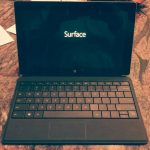
This past Tuesday, I announced my Microsoft-only experiment. My goal is to only use Microsoft devices for a week -- not easy for a Linux user -- and I have since followed through on that commitment. Armed with only a Surface 2 (Windows RT 8.1), Nokia Lumia 928 and a Windows 8.1 desktop, I managed to make the transition, although it was not all sunshine. More on that later.
As someone who writes a lot, a good keyboard is a must. Believe it or not, the Surface's on screen keyboard is simply brilliant. I can type better on it than the iPad or any Android keyboard. It is very responsive and the auto-correct feature works well. I even find the audio feedback to be oddly pleasing. On Android, I turn off the volume, as I find the clicking sound to be annoying, not here; it actually adds to the experience.
Bloomfire streamlines corporate knowledge sharing
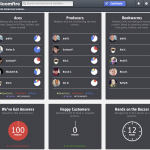
We've seen a raft of tools in recent months that seek to combine business intelligence with elements of social networking. Bloomfire's USP in this field is that it seeks to capture the knowledge that already exists within an enterprise and use it to deliver improved employee engagement and ultimately better customer service.
Bloomfire has a clean interface reminiscent of Google+ and it works by dividing content into "feeds". These are designed to deliver content that’s relevant to the individual whilst filtering out noise so that people can find the information they need to do their jobs. Notifications can also be customized so that relevant notifications and tags aren't missed. The result is more time spent on the actual task and less managing the system. In any case it's designed to be used by business people rather than technicians.
Most Commented Stories
© 1998-2025 BetaNews, Inc. All Rights Reserved. Privacy Policy - Cookie Policy.

